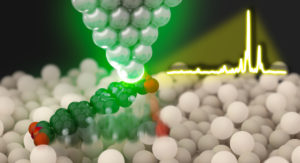News Reports
Sep 2024

The European Research Council has awarded Melanie Müller an ERC Starting Grant for her project FASTOMIC. With a total amount of €1.5 million for a period of five years, this grant will allow her and her team to push the limits of ultrafast scanning tunneling microscopy to study the emergence and dynamics of nonequilibrium quantum states in real time and space. The project entitled “Ultrafast atomic-scale imaging and control of nonequilibrium phenomena in quantum materials” is [more...]
Aug 2024

The manipulation of optical and electrical properties at the nanoscale has been critical for the development of miniaturized devices such as single-molecular sensors and photoswitches. Localized surface plasmons (LSPs), which are confined light waves generated at surfaces of nanomaterials, are powerful tools for building optoelectronic devices, as they enable reaction pathways that are inaccessible with far-field light. Traditionally, metallic structures have been targeted for LSP-induced photochemistry, which [more...]